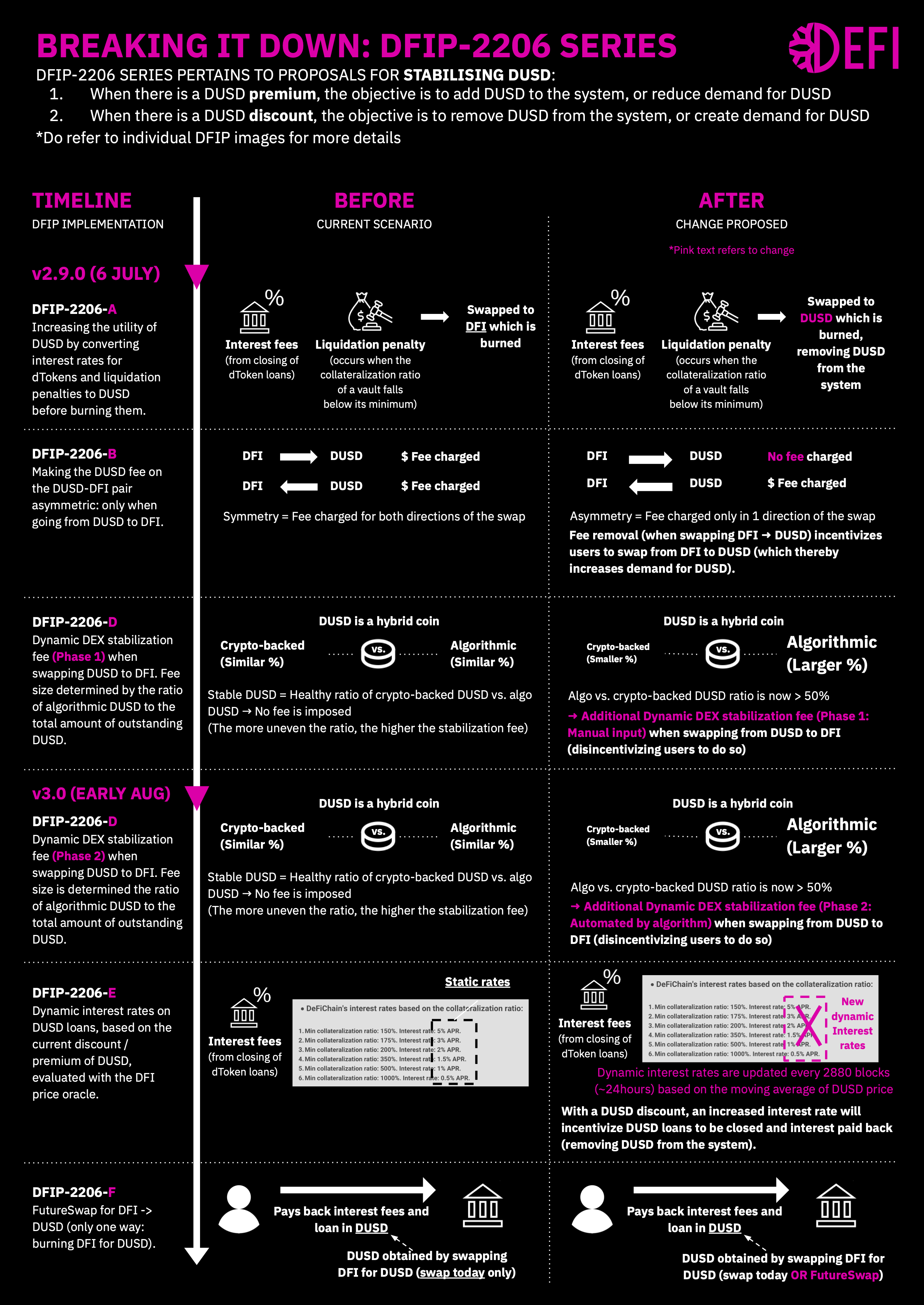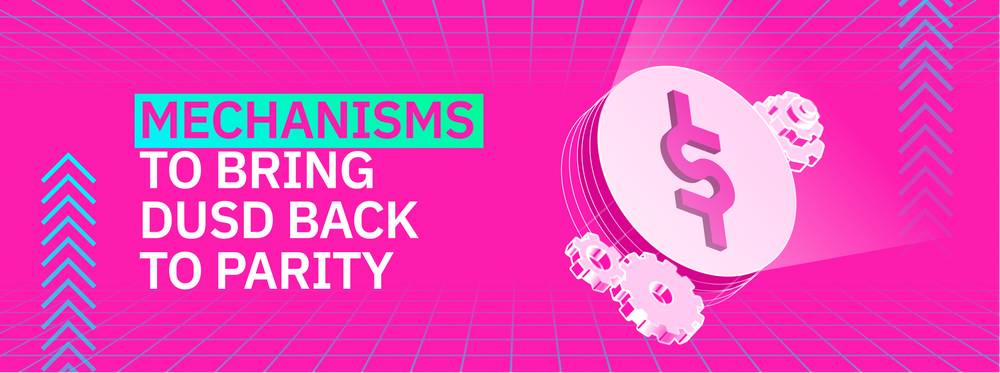The DEX stabilization fee’s effects on DUSD
Throughout the last couple of weeks, nearly all stablecoins encountered some turbulent times. Some had to do with bad tokenomics, others were due to FUD. Hence, this blog post aims to explain how the recently implemented DeFiChain Improvement Proposals (DFIPs) will stabilize the price of DUSD and what users should do next.
Status quo and what has happened?
Let’s quickly look a few months back, when the DUSD price oscillated around US$1.20 and stayed there for quite some time before successful implementations were introduced that brought the price down to US$1.
Now, we have the exact opposite scenario: Instead of +20%, DUSD is trading around US$0.80 prices for the last few days. As a result, the community put their heads together and came up with some well-thought-out DFIPs that have been voted on last week by the masternodes and have been implemented today to bring the DUSD price back to 1 USD.
In this blog post, you can find a summary of these proposals; today’s blog post will take a more detailed look into what these DFIPs are going to accomplish in the short- to mid term.
With today's v2.9 blockchain update, the community introduced DFIP-2206-A about “Burning interest rates and liquidation penalty in DUSD” and DFIP-2206-B about “Making the DEX burn on DUSD-DFI asymmetric”. DFIP-2206-C will not be in action anymore, since the community has voted to remove it, allowing DFI payments for DUSD loans as a whole, in favor of a DEX stabilization fee (DFIP-2206-D).

What will these steps mean for the DUSD price?
All three DFIPs have one thing in common: they will drive up the DUSD price by increasing the utility and rarity of DUSD.
DFIP-2206-A, for instance, increases the utility of DUSD by converting interest rates for dTokens and liquidation penalties to DUSD before burning them. This stands in stark contrast to the current method where they are swapped to DFI and then being burned.
DFIP-2206-B, on the other hand, focuses on increasing the rarity of DUSD by implementing an asymmetric DEX burn fee for the DUSD-DFI pair. This fee only applies when DUSD is sold and will lead to fewer DUSD in circulation.
A continuation of this proposal is DFIP-2206-D and has been implemented manually today; the automated one will kick in – as previously communicated – with the v.3.0 update in August. The DFIP focuses on the introduction of a DEX stabilization fee for DUSD on the DUSD-DFI pair.
Currently, DUSD can be created via two methods: loan-backed and algorithmic. To ensure a stable $1 DUSD, these two sorts of DUSD should be in a “healthy” ratio, ideally at least 50% backed by loans. The stabilization fee will ensure that DUSD is removed from the system over time if the loan-backed DUSD are below 50% of the total DUSD. The more this ratio tilts in favor of algo backed DUSD, the higher the stabilization fee will be in order to burn DUSD from the system.
The DEX stabilization fee isn’t automatically set yet by the blockchain, but has to be set manually by the community via an exponential increase structure. As such, the stabilization fee has been set to 30%. This value will gradually decrease – in the same way as outlined in the DFIP – when more DUSD is created via loans, rather than the algo model (which has been deactivated now anyway). Due to this valve, which incentives buying, but penalizes selling, the DUSD price should relatively quickly stabilize around the intended $1 mark, or even slightly above that.
As a quick info: In the DeFiChain Light Wallet, the slippage protection will not allow for trades where the slippage is set lower than the DEX stabilization fee. If a user still wants to sell his/her DUSD with an implied DEX stabilization fee, then they have to manually set the slippage > current DEX stabilization fee.
What’s the best approach for you right now?
In the first place, there are two ways of getting your hands on DUSD: either you buy them on the DEX or you mint them using a Vault. If you buy DUSD directly from the DEX with the intention of selling them a few days later for a profit, then this would most likely not work out, since the DEX stabilization fee would eat away any potential profits. You would have to wait until the stabilization fee is reduced over time. This is absolutely fine for longterm hodlers, however, users with a short term investment horizon should not buy DUSD on the DEX when a DEX stabilization fee is active.
For traders, it makes more sense to mint DUSD using a Vault. By creating DUSD yourself, you do not have to buy and then again sell DUSD on the DEX, but instead, you simply have to repay and close the Loan in your Vault and don’t have to worry about such a stabilization fee at all.
If you are holding DUSD and are waiting for the stabilization fee to decrease again, use your DUSD in a Vault as collateral for Liquidity Mining or invest them into other dTokens such as dTSLA, etc.
If you do not know how to mint dToken like DUSD or open a Vault, then this step-by-step guide walks you through the whole process.

